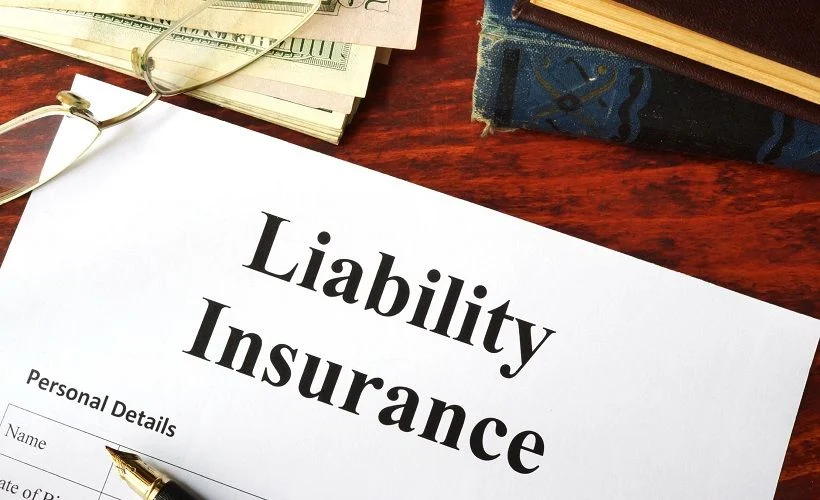In today’s fast-paced and unpredictable business world, no company is immune liability to risks. From customer slip-and-fall accidents to product-related lawsuits, even a single incident can lead to costly claims that threaten your financial stability.
That’s where general liability insurance (GLI) comes in. Whether you’re a small business owner, freelancer, or contractor, this type of coverage is one of the most essential protections you can have.
This in-depth guide will walk you through everything you need to know about general liability insurance in 2025 — what it covers, how it works, costs, who needs it, and how to get the best policy for your business.
1. What is General Liability Insurance?
General liability insurance is a business insurance policy that protects you against claims of bodily injury, property damage, and personal/advertising injury caused by your business operations, products, or services.
It’s sometimes called:
-
Commercial general liability (CGL)
-
Business liability insurance
-
Public liability insurance
While it doesn’t cover every risk your business might face, it forms the foundation of most commercial insurance programs.

2. Why General Liability Insurance Matters
Without GLI, a single lawsuit could cripple your business. According to a recent industry study:
-
The average customer injury claim costs over $20,000.
-
Defamation lawsuits can exceed $50,000 in legal expenses.
-
Property damage claims often run into tens of thousands of dollars.
If you don’t have coverage, these costs come directly out of your pocket — and for many small businesses, that’s enough to cause bankruptcy.
3. What General Liability Insurance Covers
A standard general liability policy typically includes coverage for:
1. Bodily Injury
If someone (other than an employee) is injured on your business premises or due to your business activities, GLI can cover:
-
Medical expenses
-
Lost wages
-
Legal defense costs
Example: A customer trips over a loose cable in your store and breaks their arm. Your GLI policy pays for their medical treatment and any settlement.
2. Property Damage
Covers accidental damage to someone else’s property caused by your business.
Example: While installing a kitchen, your employee accidentally floods the client’s home. GLI covers repair costs.
3. Personal and Advertising Injury
Protects against non-physical injuries caused by your business, such as:
-
Libel and slander
-
Copyright infringement in advertisements
-
Misappropriation of advertising ideas
Example: A competitor claims your marketing materials defame their brand. GLI can pay for your defense.
4. Legal Defense and Settlements
Even if a claim is groundless, your insurer covers:
-
Attorney fees
-
Court costs
-
Settlements or judgments (up to policy limits)
4. What General Liability Insurance Does NOT Cover
Understanding exclusions is just as important as knowing what’s covered. GLI generally does not cover:
-
Employee injuries – Covered by workers’ compensation insurance.
-
Professional mistakes – Covered by professional liability insurance (errors and omissions).
-
Damage to your own property – Covered by commercial property insurance.
-
Automobile accidents – Covered by commercial auto insurance.
-
Intentional acts – Coverage applies only to accidents, not deliberate harm.
-
Cyber attacks – Covered by cyber liability insurance.
5. Who Needs General Liability Insurance?
Nearly all businesses can benefit from GLI, but it’s especially important for:
Small Businesses & Startups
Small businesses often lack the financial cushion to absorb legal costs. Many landlords, lenders, and clients require proof of GLI before doing business.
Contractors & Tradespeople
Construction, plumbing, electrical work, and other trades involve physical risks where accidents can easily occur.
Retailers & Restaurants
High customer foot traffic increases the chance of slips, falls, and other injuries.
Professional Service Providers
Even consultants and marketing firms face advertising injury risks.
6. How Much Does General Liability Insurance Cost in 2025?
The cost of GLI varies depending on several factors, but in 2025:
-
Small businesses pay an average of $450–$1,200 per year.
-
Low-risk businesses (like consultants) may pay as little as $300 annually.
-
High-risk trades (like construction) can pay $2,000 or more.
Cost Factors Include:
-
Industry – Higher risk = higher premiums.
-
Location – Claims history and local legal climate impact rates.
-
Business size – Revenue, number of employees, and square footage matter.
-
Coverage limits – More coverage = higher cost.
-
Claims history – Previous lawsuits or accidents can raise premiums.
7. Typical Coverage Limits
Most small businesses choose:
-
$1 million per occurrence (maximum paid per claim)
-
$2 million aggregate (maximum paid per policy year)
Higher limits are available for larger or riskier businesses.
8. How to Get General Liability Insurance
Step 1: Assess Your Risks
List your business activities, customer interactions, and potential hazards.
Step 2: Choose Coverage Limits
Decide how much protection you need based on industry and exposure.
Step 3: Get Multiple Quotes
Compare at least three providers — both national insurers and local agencies.
Step 4: Review Policy Details
Look at exclusions, deductibles, and add-on options.
Step 5: Purchase and Maintain Coverage
Keep proof of insurance handy and review annually.
9. How to Save Money on General Liability Insurance
-
Bundle policies – Combine GLI with property insurance in a Business Owner’s Policy (BOP).
-
Improve safety protocols – Reduce accidents to lower claims.
-
Pay annually – Annual payments often cost less than monthly installments.
-
Shop around – Compare multiple insurers.
-
Maintain good credit – Many insurers use credit-based scores.
10. General Liability Insurance for Different Industries
Construction
High risk of bodily injury and property damage; often requires higher limits and endorsements.
Retail
Covers customer injuries, product-related claims, and advertising risks.
Hospitality
Restaurants, bars, and hotels face injury and foodborne illness claims.
Professional Services
Designers, marketers, and consultants need coverage for advertising injury.
Freelancers
Even home-based businesses may need GLI if meeting clients or running ads.
11. Certificates of Insurance (COI)
A certificate of insurance is proof that you have coverage. Many clients require a COI before signing contracts. It lists:
-
Policyholder name
-
Coverage types
-
Policy limits
-
Effective dates
12. Claims Process: How It Works
-
Incident Occurs – An accident or claim triggers coverage.
-
Notify Insurer – Report promptly with details and documentation.
-
Investigation – Insurer reviews evidence and interviews witnesses.
-
Resolution – Claim is paid, denied, or settled within policy limits.
13. Common Myths About General Liability Insurance
-
“I’m too small to be sued” – Even one customer injury can lead to a lawsuit.
-
“GLI covers all business risks” – It doesn’t; you may need multiple policies.
-
“It’s too expensive” – Basic coverage can cost less than $1/day.
14. Add-On Coverages (Endorsements)
You can customize GLI with endorsements, such as:
-
Product liability – For manufacturers and sellers.
-
Liquor liability – For alcohol-serving businesses.
-
Contractual liability – Covers certain obligations assumed in contracts.
15. How GLI Fits into a Complete Business Insurance Plan
General liability insurance is often paired with:
-
Property insurance – Protects your buildings and contents.
-
Workers’ compensation – Covers employee injuries.
-
Professional liability – Covers errors and omissions.
-
Cyber liability – Covers data breaches and hacks.
16. The Future of General Liability Insurance
By 2030, expect:
-
Usage-based pricing using real-time risk data
-
AI-powered claim processing
-
Expanded coverage for emerging risks like AI-generated content liability
17. Final Thoughts
General liability insurance is not just an expense — it’s an investment in your business’s stability and credibility. Whether you’re a startup or an established company, having GLI means you can operate with confidence, knowing you’re protected from some of the most common and financially devastating claims.
Key Takeaways:
-
GLI covers bodily injury, property damage, and advertising injury.
-
Most small businesses need at least $1M/$2M limits.
-
Average cost is $450–$1,200/year depending on risk.
-
Bundle policies, improve safety, and compare quotes to save.
